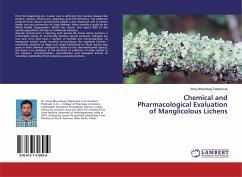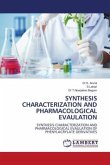From the beginning era, human race is suffering from various diseases like cholera, malaria, chicken pox, dysentery, and viral infections. The medicinal products from natural sources have played a very important role in human health care and prevention of these diseases. More recently a study by the World Health Organization (WHO) has shown that about 80% of the world's population still rely on traditional medicine. Aquatic environment is teeming with several life forms which produce a remarkable variety of structurally exciting natural products. Mangals are one such form that host a number of animals and microorganisms. As mangroves survive under stressful surroundings, the epiphytes (lichens - mutualistic existence of algae and fungi) habituated on these species may varies in their chemical constituents. Based on the aforementioned aspects, this book is an endeavor in the direction of collection of data related to the isolation, characterization, derivatization and biological activity of secondary metabolites from mangrove associated lichens.
Bitte wählen Sie Ihr Anliegen aus.
Rechnungen
Retourenschein anfordern
Bestellstatus
Storno







![A Synopsis of North American Lichens [microform] A Synopsis of North American Lichens [microform]](https://bilder.buecher.de/produkte/65/65519/65519636m.jpg)
![A Synopsis of the North American Lichens [microform]: Part I, Comprising the Parmeliacei, Cladoniei, and Coenogoniei A Synopsis of the North American Lichens [microform]: Part I, Comprising the Parmeliacei, Cladoniei, and Coenogoniei](https://bilder.buecher.de/produkte/65/65501/65501788m.jpg)